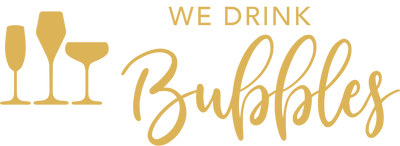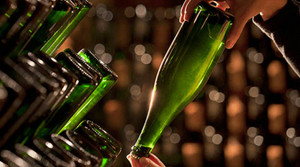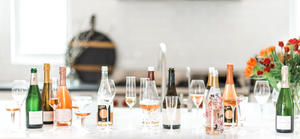For many of us, the first thing that comes to mind when we think of bubbly wine is Champagne - the designated, sparkly beverage of choice when it comes to all things celebratory. I am often asked, "Is prosecco champagne?" so let's dive into this subject a bit deeper.
As some of you may know, true champagne can only come from grapes grown and processed in the Champagne region of France and by following a very strict process. However, many other types of delicious sparkling wines are produced elsewhere in the world, with two different methods: the Traditional Method (champagne method) and the Charmat Method (tank method).
The main difference between the Traditional Method and the Charmat Method is the vessel used for secondary fermentation. Traditional Method bubbles go through secondary fermentation in the bottle (ex. Champagne), while in Charmat Method, secondary fermentation occurs in...you guessed it...a tank (ex. Prosecco).
I almost always prefer Traditional Method bubbles to Charmat Method bubbles for several reasons, however, the main difference for me is the incredibly nuanced textures and flavors that are added to the wine in the Traditional Method, much of which comes from the time the wine spends with yeast.
Check out all the other differences below...

The two primary methods of making sparkling wine:
Traditional Method
Names: Traditional Method, Méthode Champenoise, Méthode Traditionnelle, Methode Cap Classique, Metodo Classico, etc.Examples: Champagne, Crémant, Cava, Sekt, Franciacorta, Brut
Pressure: 5–7 atmospheres
Sweetness: Traditional Method sparkling wines are generally on the drier side. They range from Brut Nature (zero added sugar) to sweeter styles like Demi Sec (more on sweetness levels HERE). Most champagne houses lean towards making dry Bruts, as is the current preference of consumers.
Flavors: Richer layers, toast, brioche, nut, fruit, citrus.
Process:
- Grapes are hand picked and fermented in tank into a dry wine (vin clair). After primary fermentation is complete, the winemaker then blends a “cuvée” of different base wines for a final blend.
- Yeast and sugar are added to the cuvée to start the secondary fermentation and wines are bottled (and topped with crown caps).
- The secondary fermentation adds more alcohol, which creates CO2, which is trapped inside the bottle thus carbonating the wine. The yeast dies in a process called autolysis and remain in the bottle.
- Wines are aged on their lees (dead yeast particles) for a period of time (anywhere from 12 months to years and years) to develop texture and flavor in the wine. Most believe the longer the wine ages on its lees, the better.
- The wines are clarified in a process called riddling which can be done by hand or mechanically. This occurs by settling the bottle upside down and capturing the dead yeast cells in the neck of the bottle.
- The bottles are then disgorged, which is the removing of sediment from bottle. The bottles are placed upside down into freezing liquid which causes the yeast bits to solidify in the neck of the bottle. The crown cap is then popped off momentarily which allows the frozen chunk of lees to shoot out of the pressurized bottle.
- The bottles are then topped off with a dosage mixture of wine and/or wine and sugar and then bottles are corked, wired with a cage and labeled.
More on how Champagne is made: HERE

Charmat Method
Names: Charmat Method, Metodo Italiano, Cuvée Close, Autoclave
Examples: Prosecco, Moscato, Lambrusco, EspumantePressure: 2–4 atmospheres
Sweetness: Tank Method wines tend to be sweeter than wines made in the traditional method. This is due to stylistic choices by winemakers rather than any inherent difference in the production methods.
Flavors: Simple, fresh, fruity, bright, sweet.
Process:
- Grapes are picked and fermented in tank to create a base wine.
- Once primary fermentation is complete, base wines are added together and yeast and sugar are added to start the secondary fermentation in the tank.
- The CO2 released from the secondary fermentation causes the tank to pressurize.
- Wines are then filtered as they are transferred to a bottle without any aging.
-
Each bottle is topped up with a dosage mixture of wine and sugar and then bottles are corked, wired with a cage and labeled.


